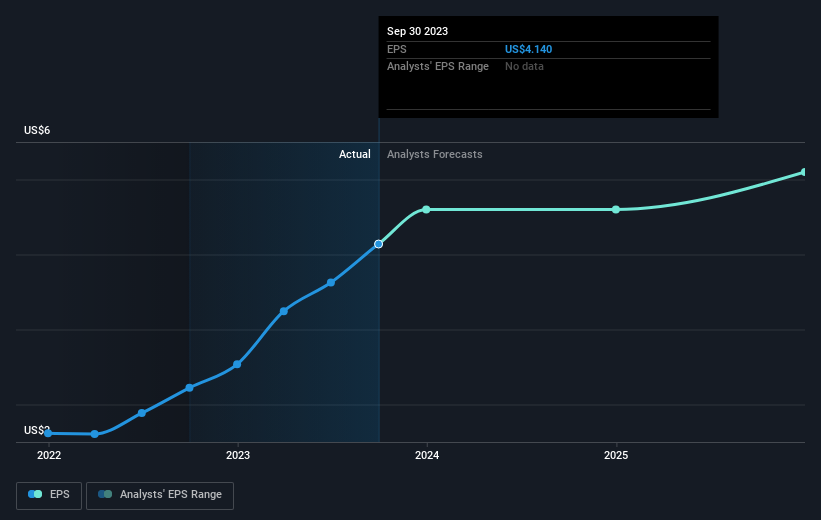Banco Latinoamericano de Comercio Exterior S. A's (NYSE:BLX) investors will be pleased with their notable 89% return over the last three years
By buying an index fund, investors can approximate the average market return. But many of us dare to dream of bigger returns, and build a portfolio ourselves. For example, Banco Latinoamericano de Comercio Exterior, S. A. (NYSE:BLX) shareholders have seen the share price rise 58% over three years, well in excess of the market return (15%, not including dividends).
With that in mind, it's worth seeing if the company's underlying fundamentals have been the driver of long term performance, or if there are some discrepancies.
See our latest analysis for Banco Latinoamericano de Comercio Exterior S. A
While markets are a powerful pricing mechanism, share prices reflect investor sentiment, not just underlying business performance. One imperfect but simple way to consider how the market perception of a company has shifted is to compare the change in the earnings per share (EPS) with the share price movement.
Banco Latinoamericano de Comercio Exterior S. A was able to grow its EPS at 33% per year over three years, sending the share price higher. The average annual share price increase of 16% is actually lower than the EPS growth. So it seems investors have become more cautious about the company, over time. This cautious sentiment is reflected in its (fairly low) P/E ratio of 6.02.
The image below shows how EPS has tracked over time (if you click on the image you can see greater detail).
It is of course excellent to see how Banco Latinoamericano de Comercio Exterior S. A has grown profits over the years, but the future is more important for shareholders. If you are thinking of buying or selling Banco Latinoamericano de Comercio Exterior S. A stock, you should check out this FREE detailed report on its balance sheet.
What About Dividends?
As well as measuring the share price return, investors should also consider the total shareholder return (TSR). The TSR is a return calculation that accounts for the value of cash dividends (assuming that any dividend received was reinvested) and the calculated value of any discounted capital raisings and spin-offs. Arguably, the TSR gives a more comprehensive picture of the return generated by a stock. In the case of Banco Latinoamericano de Comercio Exterior S. A, it has a TSR of 89% for the last 3 years. That exceeds its share price return that we previously mentioned. And there's no prize for guessing that the dividend payments largely explain the divergence!
A Different Perspective
It's good to see that Banco Latinoamericano de Comercio Exterior S. A has rewarded shareholders with a total shareholder return of 64% in the last twelve months. Of course, that includes the dividend. That's better than the annualised return of 17% over half a decade, implying that the company is doing better recently. Someone with an optimistic perspective could view the recent improvement in TSR as indicating that the business itself is getting better with time. While it is well worth considering the different impacts that market conditions can have on the share price, there are other factors that are even more important. To that end, you should be aware of the 1 warning sign we've spotted with Banco Latinoamericano de Comercio Exterior S. A .
Of course Banco Latinoamericano de Comercio Exterior S. A may not be the best stock to buy. So you may wish to see this free collection of growth stocks.
Please note, the market returns quoted in this article reflect the market weighted average returns of stocks that currently trade on American exchanges.
Have feedback on this article? Concerned about the content? Get in touch with us directly. Alternatively, email editorial-team (at) simplywallst.com.
This article by Simply Wall St is general in nature. We provide commentary based on historical data and analyst forecasts only using an unbiased methodology and our articles are not intended to be financial advice. It does not constitute a recommendation to buy or sell any stock, and does not take account of your objectives, or your financial situation. We aim to bring you long-term focused analysis driven by fundamental data. Note that our analysis may not factor in the latest price-sensitive company announcements or qualitative material. Simply Wall St has no position in any stocks mentioned.

